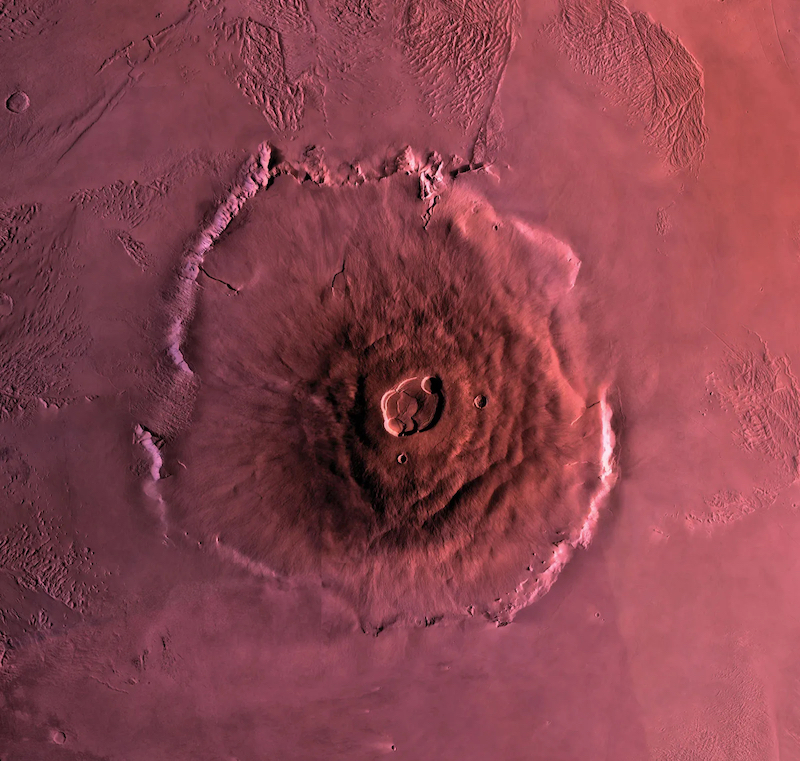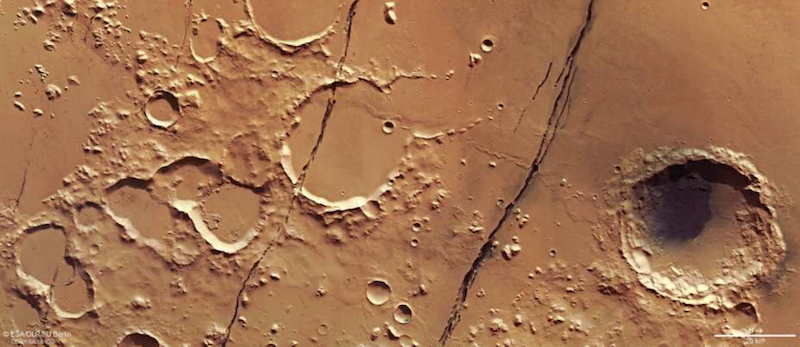
Mars has many volcanoes, including the largest known in the solar system, Olympus Mons. But Mars volcanoes don’t appear active. And, for decades, scientists have assumed the planet is geologically dead. But is it? In late October 2022, an international team of researchers announced evidence that Mars is still volcanically active below its surface.
The findings are based on data from NASA’s InSight lander. By analyzing the seismic signals from marsquakes, the researchers found that molten lava, a.k.a. magma, still exists underground.
The researchers say that vulcanism still plays an active role in shaping the Martian surface. They published their peer-reviewed findings in Nature Astronomy on October 27, 2022. There is also a free preprint version of the paper available on arXiv.
Clues from marsquakes
The evidence for a still-geologically active Mars comes from NASA’s InSight lander. InSight has been recording the faint seismic pings from marsquakes, the Martian equivalent of earthquakes. So far, InSight has detected over 1,300 such marsquakes. The researchers found that the epicenters of many of the quakes were in a region called Cerberus Fossae. This region contains numerous faults and rifts. The researchers analyzed a series of more than 20 marsquakes that originated there, mostly in the inner part of Cerberus Fossae. While most faults on Mars are no longer active, some are. As the paper mentions:
The InSight mission has measured the seismicity of Mars since February 2019 and has enabled the investigation of tectonics on the surface of another planet for the first time. Its dataset shows that most of the widely distributed surface faults are not seismically active, and that seismicity is mostly originating from a single population of tectonic structures, the Cerberus Fossae.
Mars is volcanically active
The nature of the low-frequency quakes suggests that there is still hot magma below the surface. The data from the marsquakes point to a warm source below ground in Cerberus Fossae. Could it really be lava? The researchers say that the epicenters of the marsquakes are clustered close to a “young volcanic fissure.” The paper states:
We show that the spectral character of deeper low-frequency marsquakes suggests a structurally weak, potentially warm source region consistent with recent magmatic activity at depths of 30–50 km (19-31 miles).
How do scientists know it is young, geologically speaking? Dust deposits around it provide a clue. There are darker deposits of dust around the fissure. Notably, they are not only in the dominant direction of the wind, but in all directions. These darker-colored deposits are younger than older, lighter ones. Simon Stähler, lead author at ETH Zurich, explained:
The darker shade of the dust signifies geological evidence of more recent volcanic activity – perhaps within the past 50,000 years – relatively young, in geological terms.

A not quite dead world
The new results are exciting, as they seem to indicate that Mars isn’t quite as dead – at least geologically – as previously thought. The red planet’s volcanoes may not erupt anymore, but even magma deep underground is a tantalizing finding. Such pockets of still-hot magma may be the last remaining embers of a much more active volcanic past on Mars. As Anna Mittelholz at ETH Zurich and Harvard University noted:
While there is much more to learn, the evidence of potential magma on Mars is intriguing.
And, if there are indeed such sources of heat, perhaps they could help maintain liquid water below the surface as well. That would increase the chances of microbial life still existing underground.
An earlier study from 2020 also suggested that Mars has been volcanically active in the geologically recent past, and may still be today.
The new findings also help scientists better understand geological processes here on Earth. There are many similarities between the two worlds. Mars has a general composition of iron, nickel and sulfur. It also used to have a strong magnetic field, water and a thicker atmosphere. However, if there is still enough heat below the surface for magma, then Mars isn’t quite as dead as we thought it was.
Bottom line: An international team of scientists says data from NASA’s InSight lander show that Mars is volcanically active below the surface, with pockets of hot magma.
Source: Tectonics of Cerberus Fossae unveiled by marsquakes
Source (preprint): Tectonics of Cerberus Fossae unveiled by marsquakes
The post Mars is volcanically active, scientists say first appeared on EarthSky.
0 Commentaires